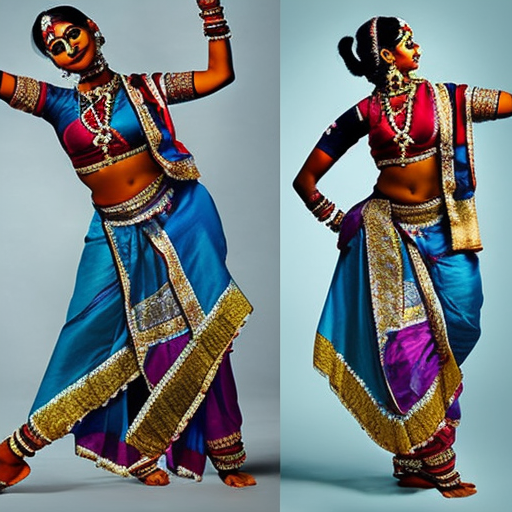Summary:
Odissi is a classical Indian dance form that originated in the state of Odisha. It is known for its graceful movements, intricate footwork, and expressive storytelling. Odissi has a rich history and has evolved over centuries, blending elements of temple rituals, folk traditions, and courtly dances. Today, it is recognized as one of the major classical dance forms of India and is performed and taught worldwide.
Origins and History:
Odissi traces its origins back to the temples of Odisha, where it was performed as a form of worship. The dance form flourished during the reign of the Eastern Ganga dynasty (11th to 15th century), with the temples serving as centers of artistic and cultural activities. Odissi was performed by devadasis, young girls who were dedicated to the temple deities and trained in music, dance, and poetry.
Key Features:
Odissi is characterized by its fluid movements, intricate footwork, and expressive facial expressions. The dance form incorporates a variety of hand gestures, known as mudras, which are used to convey different emotions and meanings. The body movements in Odissi are soft and rounded, with emphasis on the tribhangi posture, where the body is divided into three parts – head, chest, and hips.
Costumes and Jewelry:
The costumes in Odissi are vibrant and elaborate, reflecting the rich cultural heritage of Odisha. Female dancers wear a traditional sari draped in a unique style, known as the Odissi drape. The jewelry worn by Odissi dancers is also an important aspect of their attire. It includes intricate headpieces, necklaces, earrings, and anklets, which enhance the beauty and elegance of the dance.
Music and Instruments:
The music for Odissi is based on classical ragas and is accompanied by traditional Odissi instruments. The main instrument used is the pakhawaj, a barrel-shaped drum, which provides the rhythmic accompaniment. Other instruments include the sitar, flute, and manjira (cymbals). The music and rhythm play a crucial role in enhancing the beauty and impact of the dance.
Themes and Repertoire:
Odissi is known for its rich repertoire of dance compositions, which are based on mythological stories, devotional poetry, and folklore. The dance pieces, known as pallavis, are structured in a way that combines intricate footwork, graceful movements, and expressive storytelling. Some of the popular themes in Odissi include the love stories of Radha and Krishna, episodes from the Ramayana and Mahabharata, and the devotion of Odisha’s saints.
Revival and Global Recognition:
In the 20th century, Odissi faced a decline due to social and political changes. However, it was revived in the mid-20th century by a group of dedicated artists and scholars. They worked to reconstruct and popularize the dance form, leading to its recognition as one of the major classical dance forms of India. Today, Odissi is performed and taught not only in India but also in various parts of the world, contributing to the global appreciation and understanding of Indian culture.
In conclusion, Odissi is a classical Indian dance form that originated in Odisha and has a rich history dating back to the temple traditions of the region. It is characterized by its graceful movements, intricate footwork, and expressive storytelling. Odissi has gained global recognition and is performed and taught worldwide, contributing to the preservation and promotion of Indian art and culture.












